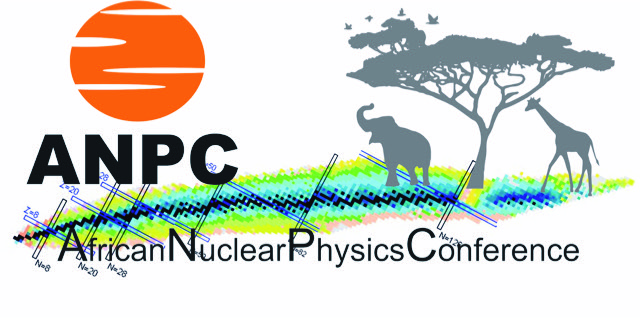Speaker
Description
The stellar weak interaction rates of proton-rich N≃Z nuclei in the A ∼70 mass region play a critical role during the rapid proton capture process (rp process) in type-I x-ray bursts taking place on the surface of neutron stars accreting hydrogen/helium-rich material from a low-mass close companion star. Nucleosynthesis in explosive hydrogen burning at high temperatures and densities is characterized mainly by the rp-process, a sequence of proton captures and weak interaction processes, β+ decays and continuum electron captures. An essential role for the rp-process reaction network studies is played by the waiting point nuclei like 68Se and 72Kr on which our studies were focused. The competition between the proton capture rates and the rates of the weak interaction processes at the waiting points affects the process significantly influencing the nuclear energy production rate and consequently the luminosity curves, direct observables of a type I x-ray burst. This competition also determines the burst time scale, the extent of the abundance flow to heavier masses as well as the final composition of the burst ashes.
Self-consistent nuclear structure models able to describe the properties of the experimentally accessible proton-rich nuclei are needed to predict the characteristics of nuclei beyond the experimental reach. Robust predictions on Gamow-Teller strength distributions for the ground state and the thermally populated low-lying excited states in the stellar environment, temperature dependence of the β + -decay rates as well as temperature and density evolution of the continuum electron capture rates during the rp-process are needed to realistically evaluate the effects of weak interaction rates of waiting point nuclei on nucleosynthesis in x-ray bursts. We investigated the impact of complex Excited Vampir beyond-mean-field predictions of stellar weak interaction rates of 68 Se and 72 Kr nuclei dominated by shape coexistence and mixing [1,2] on the rp-process in type-I x-ray bursts.
To explore the influence on burst simulations we used a post-processing approach based on a one-zone model that was adjusted to match a 1-D multizone hydrodynamic result. We performed a series of calculations based on different accreted compositions of hydrogen/helium mixing and metallicity. A comparison of the results obtained using the complex Excited Vampir predictions to the ones based on standard values for the β + -decay rates is outlined discussing the energy generation rates, the hydrogen and helium consumption, and the abundance flow to Sn isotopes reached during the burst. The results are relevant steps towards improved estimates of x-ray burst nucleosynthesis, and consequently, of the final abundances of the x-ray bursts required for modelling neutron star crust properties.
[1] A. Petrovici, O. Andrei, Eur. Phys. J. A 51, 133 (2015).
[2] A. Petrovici, O. Andrei, A. Chilug, Phys. Scr. 93, 114001 (2018).

